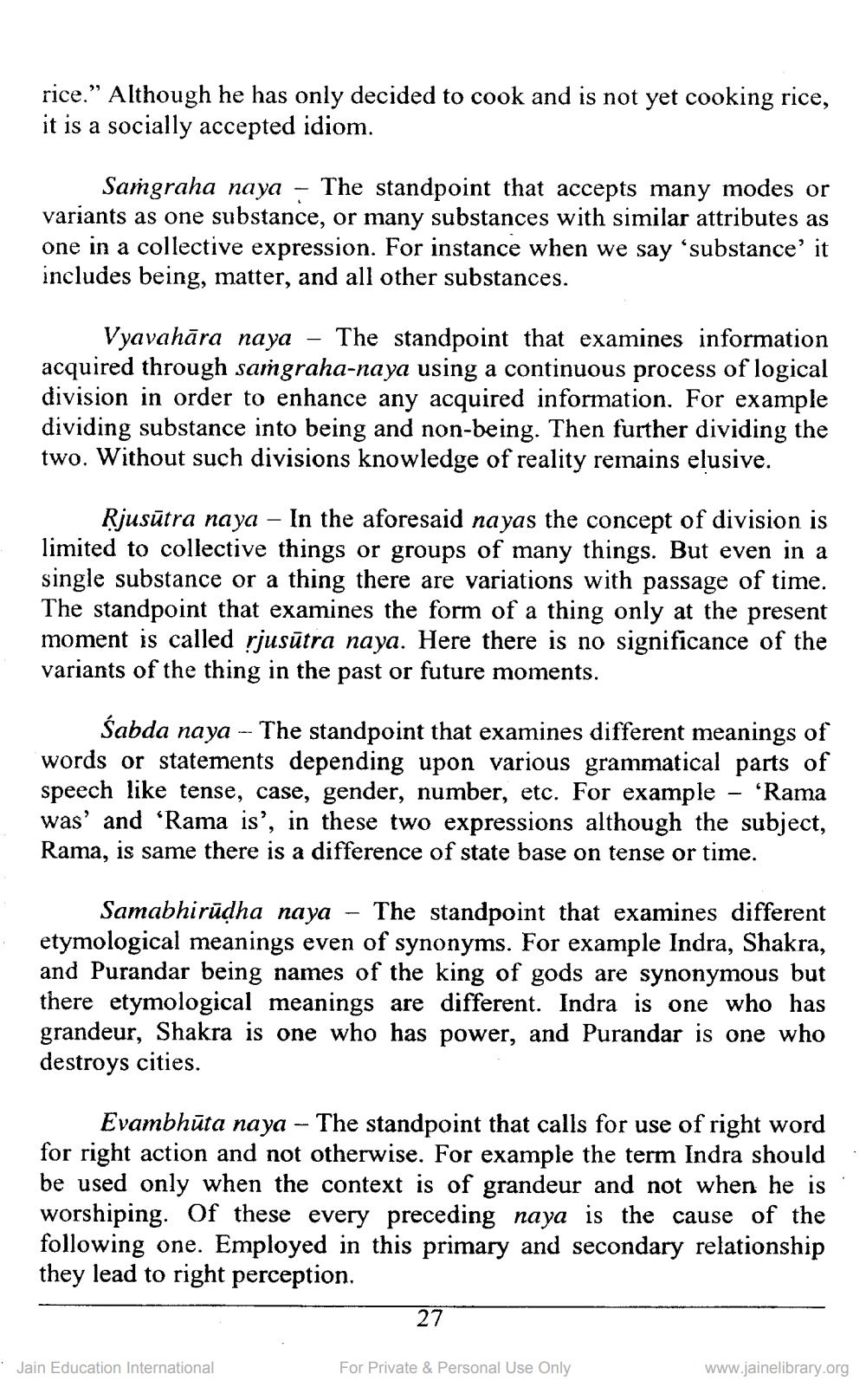________________
rice.” Although he has only decided to cook and is not yet cooking rice, it is a socially accepted idiom.
Samgraha naya - The standpoint that accepts many modes or variants as one substance, or many substances with similar attributes as one in a collective expression. For instance when we say “substance' it includes being, matter, and all other substances.
Vyavahāra naya - The standpoint that examines information acquired through samgraha-naya using a continuous process of logical division in order to enhance any acquired information. For example dividing substance into being and non-being. Then further dividing the two. Without such divisions knowledge of reality remains elusive.
Rjusūtra naya - In the aforesaid nayas the concept of division is limited to collective things or groups of many things. But even in a single substance or a thing there are variations with passage of time. The standpoint that examines the form of a thing only at the present moment is called rjusūtra naya. Here there is no significance of the variants of the thing in the past or future moments.
Sabda naya - The standpoint that examines different meanings of words or statements depending upon various grammatical parts of speech like tense, case, gender, number, etc. For example – 'Rama was' and 'Rama is', in these two expressions although the subject, Rama, is same there is a difference of state base on tense or time.
Samabhirūdha naya - The standpoint that examines different etymological meanings even of synonyms. For example Indra, Shakra, and Purandar being names of the king of gods are synonymous but there etymological meanings are different. Indra is one who has grandeur, Shakra is one who has power, and Purandar is one who destroys cities.
Evambhūta naya -- The standpoint that calls for use of right word for right action and not otherwise. For example the term Indra should be used only when the context is of grandeur and not when he is worshiping. Of these every preceding naya is the cause of the following one. Employed in this primary and secondary relationship they lead to right perception.
27
Jain Education International
For Private & Personal Use Only
www.jainelibrary.org




